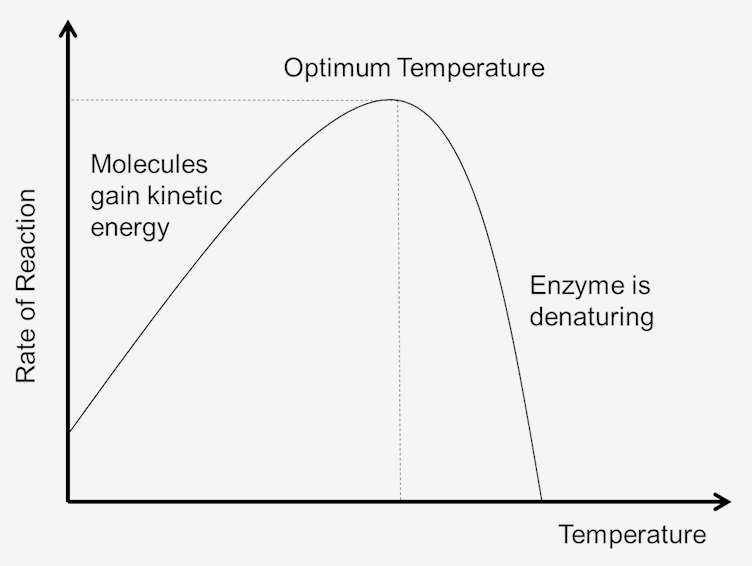Each Enzyme Has a Temperature at Which It Works Best
Trypsin also belongs to a family of proteins called serine proteases. It has a milky white texture and a pleasant odor.

Temperature Enzyme Reaction Rates Effects Examples Expii
Enzymes help reduce the activation energy of the complex molecules in the reaction.

. This heavy-duty bio enzyme cleaner breaks down and liquefies suspended solids like food feces and soap scum. Most enzymes work at neutral pH 74. This shows that activity of the enzyme diastase has transformed the starch into sugar.
However this method takes about 60 minutes to work. This further confirms the enzyme activity of diastase in germinating seeds of barley. Thus an enzyme- substrate complex is formed.
Amylase works best at around 37 degrees C which is the same as our internal body temperature. Knowing the best temperature for yeast will produce an efficient rise. E studied the effect of temperature enzyme concentration and pH on enzyme activity.
The Flo-Kem Flo-Zyme Drain Opener is our pick for the best overall enzyme drain cleaner. This is because the temperature has the ability to change the structure of enzymes and make them become denatured or inactivated Borger P Grant P Munro L. For example pepsin works at a low pH ie it is highly acidic while trypsin works at a high pH ie it is basic.
The method of application helps remove foul odors and works to dissolve hair food grease and soap scum clogs. Each enzyme has an active site which is where one of the substrate molecules can bind to. The rate at which an enzyme works is influenced by several factors including the concentration of substrate hydrogen peroxide in the case of catalase temperature pH salt concentration and the presence of inhibitors or activators.
The enzyme we studied was hydrogen peroxidase from a cow. Fresh yeast and instant dry yeast dont need to be bloomed. Most enzymes in the human body work best at around 37C body temperature.
Every enzyme has an optimal range for each of these factors. Each enzyme has a pH value that it works at with maximum efficiency called the optimal pH. The industry standard temperature range for blooming a dry active yeast is 100-115 degrees F.
Any enzyme that breaks peptide bonds is called a proteolytic enzyme. Take 9 test tubes and in each of them take 5ml of buffer solution of known pH like 5055 60657075808590. When enzymes or any protein for that matter are heated too much anything over about 80 degrees C for amylase it will denature.
Similarly enzymes can only function in a certain. If the temperature is decreased and increased the efficiency of the enzyme decreases and there is a decrease in reaction rate. When the dough is proofing the best temperature for the yeast is between 77-100F.
This works in animals and plants as well. The reaction converted hydrogen peroxide to water and oxygen and oxygen production was used as a measure of enzyme activity. The following steps simplify how an enzyme works to speed up a reaction.
The assay was carried out by mixing 100 μl of the crude enzyme with 400 μl of substrate and incubating for 60 min at the desired temperature which was changed according to the experimental design presented in Table 1. Enzyme activity was determined by measuring the released reducing sugar by DNS method and results were expressed as IUgds. They get this name because they all have the amino acid.
At lower temperatures they will still work but much more slowly. Tube 2 starch amylase 100 degrees C Temperature. If the pH is lower or higher than the optimal pH the enzyme activity decreases until it stops working.
We studied enzyme activity at temperatures of 9 C 37 C 41 C. We found it had left our drain smelling good and running clear.

Effect Of Temperature On Enzymatic Reaction Creative Enzymes


Comments
Post a Comment